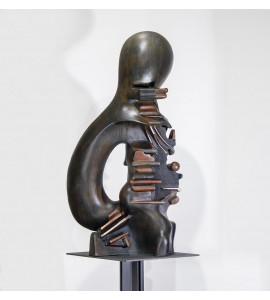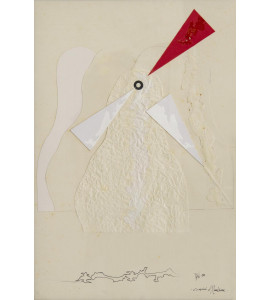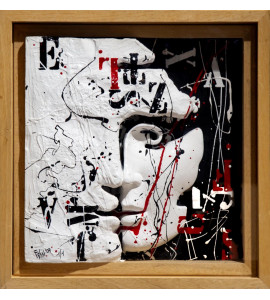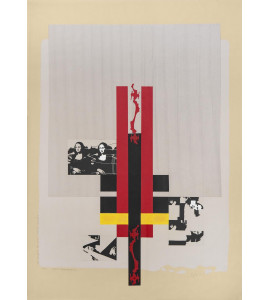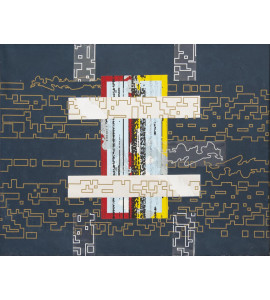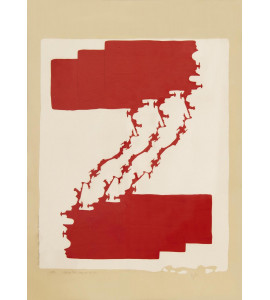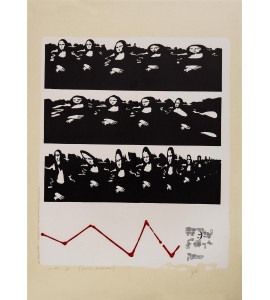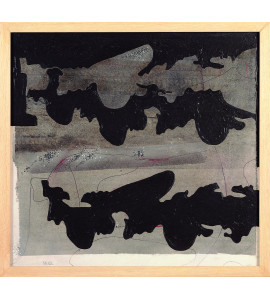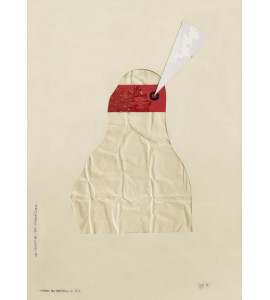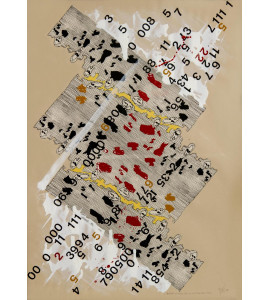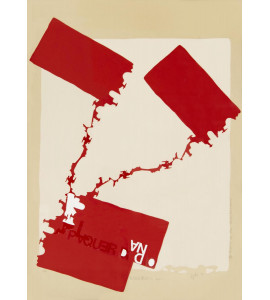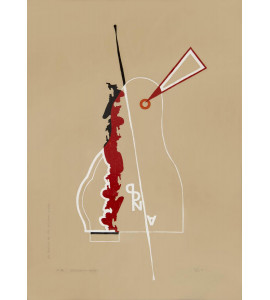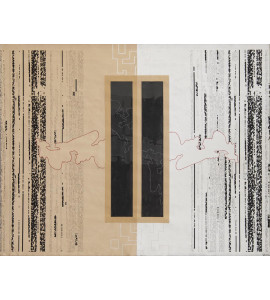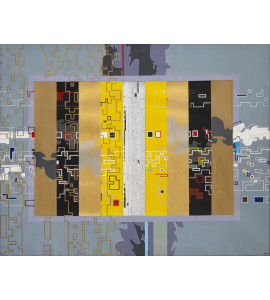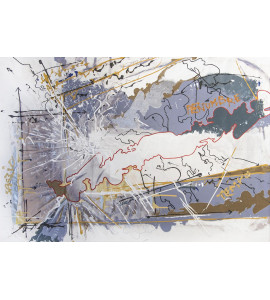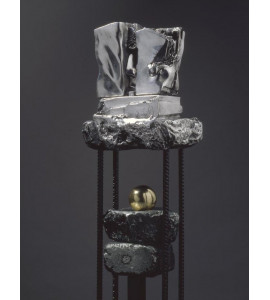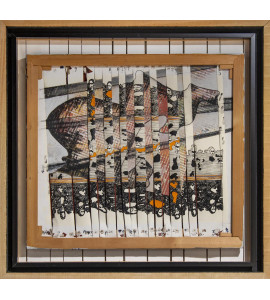
Franco Fossi
Born in 1955 in Empoli (Florence), Franco Fossi began as a young student at the State Institute of Art in Porta Romana in Florence to experiment with applications of graphic design as a construction method of composition. His research, continued after his artistic maturity and influenced by the studies of Industrial Design and his work experience as a graphic designer at the prestigious Leader agency, focused on Leonardo da Vinci's Mona Lisa as an icon of Art and brought him, in 1974, the first creation of the VISUAL DNA which represents the synthesis of an innovative investigation methodology of which he is the head.
From 1971 to today, the artist's fervent creativity has translated into a vast production of works divided into cycles corresponding to specific historical periods, following different influences received both from previous artistic cycles and from experiences of personal experience.
In fact, over the years, Fossi combines his artistic career with the varied professional experiences that range from graphic design to the television sector with national broadcasters, and which influence his methods and expressive tools. These are the years of the path called L'Origine beyond the visual, in particular with the Monnalisiano Celato and Visual DNA cycles in which the skillful mastery in mastering the artistic techniques with graphic applications shines through in every creation, giving his works a visual impact and a extremely singular expressive force.
In 1992, on the occasion of a collaboration with the art photographer Aurelio Amendola, he filmed Michelangelo's Medici Chapels in Florence and was inspired by the application of the VISUAL DNA research on Michelangelo's works such as David and Giuliano De Medici, obtaining confirmation the methodological intuition of research of the Code had during the continuous work in progress on the Mona Lisa.
The fervent artistic activity of Fossi knows new impulses also thanks to the meeting, in the early nineties, with two great artists of the caliber of Igor Mitoraj and Venturino Venturi who encourage him to continue expressing himself in sculpture, as well as in painting and application of mixed techniques. In fact, the peculiarity of Fossi is that he models, he does not sculpt, following his personal style of compositional combinations which is the hallmark of his artistic and working experience. And this is precisely the effect that arises from his Plastic Works conceived from 1993 to 2007 as well as all his creations born parallel and subsequently to the latter, affected by the influence of his working experience such as for example those of the cycles. Angelo, Multipli, The Monnalisian postcards / Strings -: typing test and The Uchu scores.
His works have become part of various qualified collections, from the Carlo Palli Archive in Prato to the Rossana Foundation and Carlo Pedretti (director of the Armand Hammer Center for Leonardo Studies of the University of California), to the Ideal Museum archive Leonardo da Vinci, to the Mirabili collection.
Rare his group shows and exhibitions, among which we mention: a group exhibition in 2004 at the Fornace Pasquinucci in Capraia Fiorentina with "The great masters of abstractionism" (sixth edition) in which he participates with a selection of works; to follow, the solo exhibition in 2006 entitled "Under the sign of the Mona Lisa" at the Ghelfi gallery in Piazza Erbe in Verona; the collective in 2008 on the occasion of the "Santa Giusta Art Week" in Castadas in Cagliari; subsequently, a solo exhibition within the "Jaconde. From Monna Lisa to Gioconda Nuda ”set up in 2009 at the Ideal Leonardo da Vinci Museum; in 2010 some of his works were exhibited at the SACI (Studio Art Center International) in Florence and, subsequently, the group exhibitions held on the occasion of exhibitions dedicated to Leonardo da Vinci at the Castle Museum and the city of Piombino, the Torrione-Museo in the city of Margherita di Savoia, the Granafei Nervegna Palace of Brindisi and the Aragonese Castle of Otranto, as well as abroad from Miami (USA) to Kahosiung and Taipei (Taiwan) and to Amboise (France).









